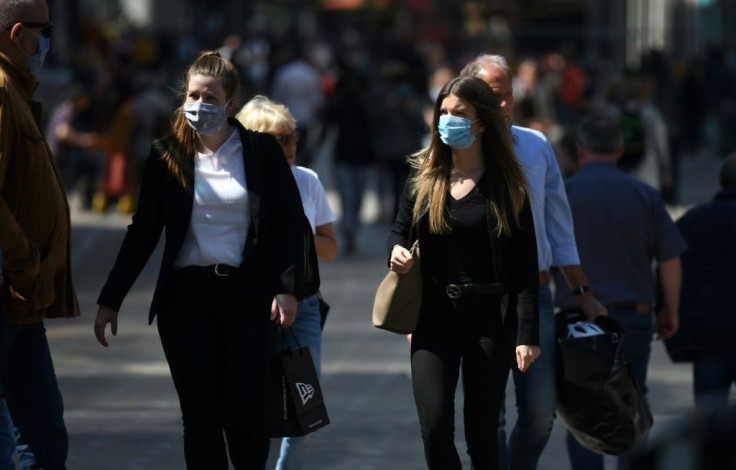German Experts Urge Discipline As Virus Data Sends Mixed Signals

German medical experts warned the public to stay disciplined Tuesday after official data drew a mixed picture on the battle against the novel coronavirus since Europe's biggest economy began a cautious easing of lockdown measures.
"Let us continue to stay at home as much as possible, keep observing the restrictions and keep a distance of 1.5 metres from one another," said Lothar Wieler, president of the Robert Koch Institute (RKI) for disease control.
He also urged the public to wear masks or cover their faces in public transport and in shops.
Hours later, that became a legal requirement nationwide as capital city Berlin became the last state to make masks compulsory in shops from Wednesday.
It is already mandatory for commuters to keep their noses and mouths covered on public transport.
"We all need to take care that we don't end up with more infections," said Wieler, adding that Germany's response to the virus so far had been a "success" which needed to be "defended".
Germany has seen days of intense media and political debate after Chancellor Angela Merkel warned Germany's federal states against loosening their lockdowns too quickly.
Latest RKI figures sent mixed signals on Tuesday, with some key figures rising while others went down.
The keenly watched reproduction or infection rate mounted again to around 1.0 from 0.7 in mid-April, meaning each infected person passes the virus on to one other.
Ministers and virologists have hammered home the importance of squeezing the number below 1.0.
Yet Wieler insisted on Tuesday that the infection rate should not be taken out of context and "should only be looked at alongside other figures".
"Another important figure is the number of new infections per day," he said, a number which had fallen to just over 1,000 this week, having been twice or four times as high in weeks gone by.
The drop in new infections means that officials are now able to carry out contact tracing again -- something that had been abandoned in March when cases were rising too quickly.

By contrast, the mortality rate from the disease has been rising day by day.
By Tuesday, it had reached 3.8 percent, according to RKI figures, which remains well below some neighbouring countries such as France.
The latest data showed 156,337 cases in Germany and 5,913 deaths.
Rising infection and mortality rates could pose a puzzle for authorities, as a population chafing at lockdown measures is just beginning to enjoy some refound freedoms and an initial united front in politics and media crumbles.
Health Minister Jens Spahn earlier in April declared the pandemic "under control" in Germany, as Merkel and state premiers agreed smaller shops could open from last week and some pupils return to school from next Monday.
Meanwhile some major businesses like car giant Volkswagen have restarted production in recent days.
Now the less encouraging data will flow into the chancellor's deliberations with regional leaders on Thursday, ahead of a new round of lockdown decisions on May 6.
Until now, the May 6 gathering had been expected to bring further easing of restrictions.
Merkel's pleas not to rush an unwinding of lockdown for fear of again worsening the virus' spread were dismissed or even blasted as authoritarian by some voices in media and the opposition.
"Even if we assume that one person infects 1.1 others, we would reach the limits of what our health system and intensive care beds can manage in October," she warned this month.
"If we assume a rate of 1.2... we would reach the health system's limit in July. And with a rate of 1.3 -- it doesn't sound like much -- we would get there in June already," she added.
© Copyright AFP 2024. All rights reserved.





















